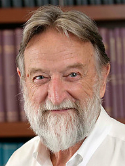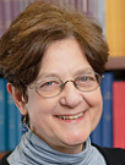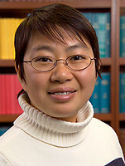Type I and II endometrial cancers: Have they different risk factors? Journal Article
| Authors: | Setiawan, V. W.; Yang, H. P.; Pike, M. C.; McCann, S. E.; Yu, H.; Xiang, Y. B.; Wolk, A.; Wentzensen, N.; Weiss, N. S.; Webb, P. M.; Van Den Brandt, P. A.; Van de Vijver, K.; Thompson, P. J.; Strom, B. L.; Spurdle, A. B.; Soslow, R. A.; Shu, X. O.; Schairer, C.; Sacerdote, C.; Rohan, T. E.; Robien, K.; Risch, H. A.; Ricceri, F.; Rebbeck, T. R.; Rastogi, R.; Prescott, J.; Polidoro, S.; Park, Y.; Olson, S. H.; Moysich, K. B.; Miller, A. B.; McCullough, M. L.; Matsuno, R. K.; Magliocco, A. M.; Lurie, G.; Lu, L. G.; Lissowska, J.; Liang, X.; Lacey, J. V.; Kolonel, L. N.; Henderson, B. E.; Hankinson, S. E.; Hakansson, N.; Goodman, M. T.; Gaudet, M. M.; Garcia-Closas, M.; Friedenreich, C. M.; Freudenheim, J. L.; Doherty, J.; De Vivo, I.; Courneya, K. S.; Cook, L. S.; Chen, C.; Cerhan, J. R.; Cai, H.; Brinton, L. A.; Bernstein, L.; Anderson, K. E.; Anton-Culver, H.; Schouten, L. J.; Horn-Ross, P. L. |
| Article Title: | Type I and II endometrial cancers: Have they different risk factors? |
| Abstract: | Purpose Endometrial cancers have long been divided into estrogen-dependent type I and the less common clinically aggressive estrogen-independent type II. Little is known about risk factors for type II tumors because most studies lack sufficient cases to study these much less common tumors separately. We examined whether so-called classical endometrial cancer risk factors also influence the risk of type II tumors. Patients and Methods Individual-level data from 10 cohort and 14 case-control studies from the Epidemiology of Endometrial Cancer Consortium were pooled. A total of 14,069 endometrial cancer cases and 35,312 controls were included. We classified endometrioid (n = 7,246), adenocarcinoma not otherwise specified (n = 4,830), and adenocarcinoma with squamous differentiation (n = 777) as type I tumors and serous (n = 508) and mixed cell (n = 346) as type II tumors. Results Parity, oral contraceptive use, cigarette smoking, age at menarche, and diabetes were associated with type I and type II tumors to similar extents. Body mass index, however, had a greater effect on type I tumors than on type II tumors: odds ratio (OR) per 2 kg/m(2) increase was 1.20 (95% CI, 1.19 to 1.21) for type I and 1.12 (95% CI, 1.09 to 1.14) for type II tumors (P-heterogeneity < .0001). Risk factor patterns for high-grade endometrioid tumors and type II tumors were similar. Conclusion The results of this pooled analysis suggest that the two endometrial cancer types share many common etiologic factors. The etiology of type II tumors may, therefore, not be completely estrogen independent, as previously believed. (C) 2013 by American Society of Clinical Oncology |
| Keywords: | obesity; smoking; carcinogenesis; carcinoma; health; women; metaanalysis |
| Journal Title: | Journal of Clinical Oncology |
| Volume: | 31 |
| Issue: | 20 |
| ISSN: | 0732-183X |
| Publisher: | American Society of Clinical Oncology |
| Date Published: | 2013-07-10 |
| Start Page: | 2607 |
| End Page: | 2618 |
| Language: | English |
| ACCESSION: | WOS:000330537800031 |
| DOI: | 10.1200/jco.2012.48.2596 |
| PROVIDER: | wos |
| PMCID: | PMC3699726 |
| PUBMED: | 23733771 |
| Notes: | Article -- Source: Wos |
Altmetric
Citation Impact
BMJ Impact Analytics
Related MSK Work








